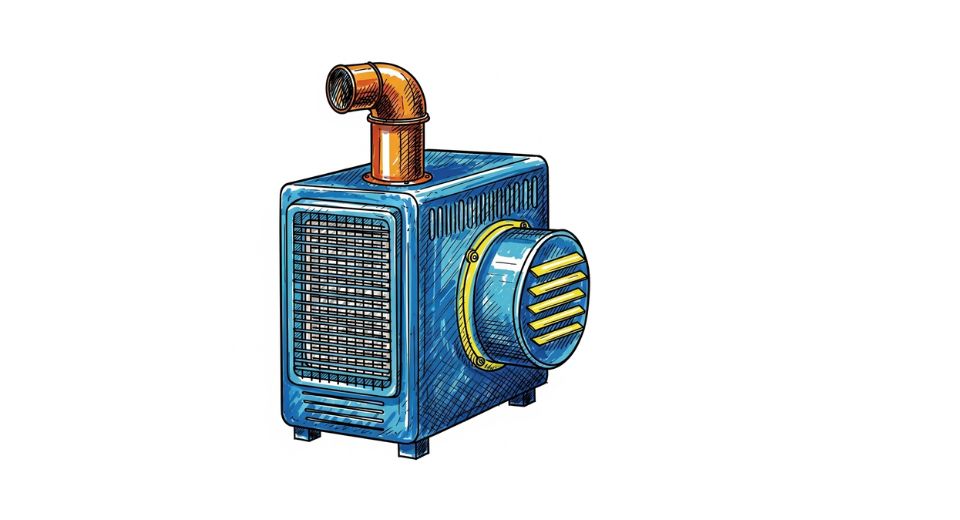
Sep 18, 2025

The Global Unitary heaters market trends brought about by Metastat Insight indicate the increasing significance of managed heating products for residential, commercial, and industrial settings. Modern spaces call for spaces that are comfortable, efficient, and flexible, and heating systems evolving from simple warmth providers to intelligent, responsive units. Increased needs for stable indoor climate control have driven attention on unitary heaters as appliances that comfortably integrate into daily routines, offering consistent performance with no wasted space or energy.
The contemporary indoor climate environment has a number of pressures to deal with. Spaces are expected to offer accurate temperature control along with tighter energy requirements and sustainability metrics. Uncertainty in outdoor conditions, fluctuating occupancy levels, and the need for rapid response in temperature compensation make optimal comfort level hard to attain. Unitary heaters can serve as good alternatives in these situations, providing localized and efficient spot heating that goes beyond the limitations of huge-sized, centralized systems. These units obviate shortcomings such as the inefficiency of uneven heat distribution, dissipation of excess energy, and the technicality of retrofitting operating infrastructures with new HVAC systems. Growing knowledge of operational efficiency and environmental sustainability has increased demand for technologies that provide balance in simplicity, reliability, and versatility, rendering unitary heaters the central forces of uniform indoor climate regulation.
Unit heaters function by absorbing electrical or fuel-based energy and transferring it into the form of thermal energy for a given space. Their operation is straightforward, requiring little installation and quick response times that deliver instant heat when needed.
Most units include precise control systems, allowing temperature settings to be controlled for comfort and efficiency. Performance improvement extends beyond mere heating; newer models have safety features, reduced noise output, and thin designs that efficiently fit into living or working spaces. Uses range from single room heating in a domestic setting to area heating in industrial manufacturing lines. Flexible installation allows for unitary heaters to be utilized as an addition to greater climate control systems or independently, in situations where entire HVAC systems are not possible or economical.
Unitary heaters have been increasingly embraced year by year. Initial units focused on general space heating, at times with very limited control features. Evolutionary developments added better heaters, thermostatic control, and energy-saving operations.
Advances in electronics regulation and materials have enhanced reliability and safety, and low-profile designs have provided additional installation possibilities. Smart system and IoT platform integration is a newer development that allows units to dynamically adapt to occupancy, weather, and user settings. This advancement is a departure from passive equipment to smart systems with meaningful impact on energy management plans, operational performance, and occupant comfort.
Adoption patterns are strongly regionally differentiated. Those areas that have highly fluctuating seasonally varying temperature regimes have led the way in implementing local heating solutions, where unitary heating allows for quick response and comfort control. Densely urban areas with high office or residential concentrations are favoured by smaller-scale decentralized heating involving minimal infrastructure changes.
Growing commercialization and urbanization in developing markets provide high growth potential since new construction introduces efficient, flexible climate control technologies into premises right from the beginning.
Spurred by the twin drivers of cheap energy management as well as improved occupant comfort, opportunities for innovative solutions and localized manufacturing strategies are born.
The challenges are regulatory compliance, initial purchasing prices, and competition from alternative heating technologies. Energy efficiency requirements drive constant evolution of components, and market saturation in a few regions creates pressure on price plans. Opportunities remain, though. Greater knowledge of heat-exchange technologies, hybrid power sources, and intelligent control interfaces improve performance at lower costs. Integration with building automation systems, synergy with renewable energy solutions, and design excellence for aesthetics and miniaturization offer possibilities for differentiation.
Such considerations position unitary heaters to expand their role in diversified applications, overcoming horizons of comfort, sustainability, and ease of operation.
Increased emphasis on sustainability, energy-efficient building operations, and flexible infrastructure underscores the importance of efficient heating systems. Where environmental responsibility, climate resilience, and digital integration are at the top of the agenda for a constantly connected world, localized heating units deliver tangible value while driving overall goals. They find a purpose above comfort by facilitating energy optimization, occupant health, and performance in operation. Unitary heaters market trends analyzed by Metastat Insight indicate the persistent influence of these products on indoor space, determining energy management strategies and smart infrastructure design. As focus shifts to functional, adaptive, and efficient systems, unitary heaters find themselves at the focal point of defining spaces that are comfortable, adaptive, and future-proof.
Drop us an email at:
Call us on:
+1 5186502376
+91 73850 57479